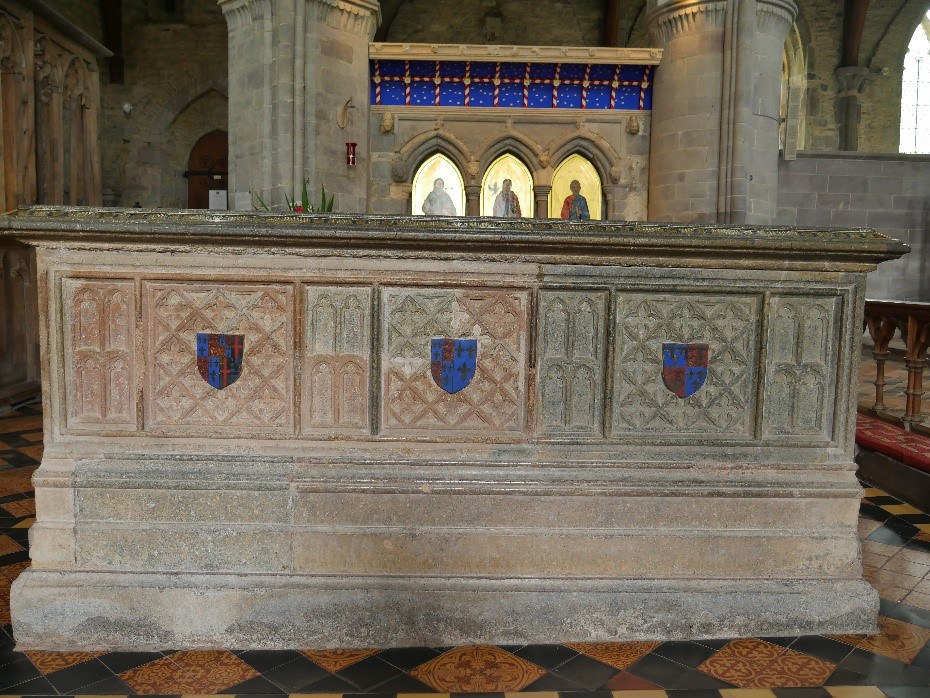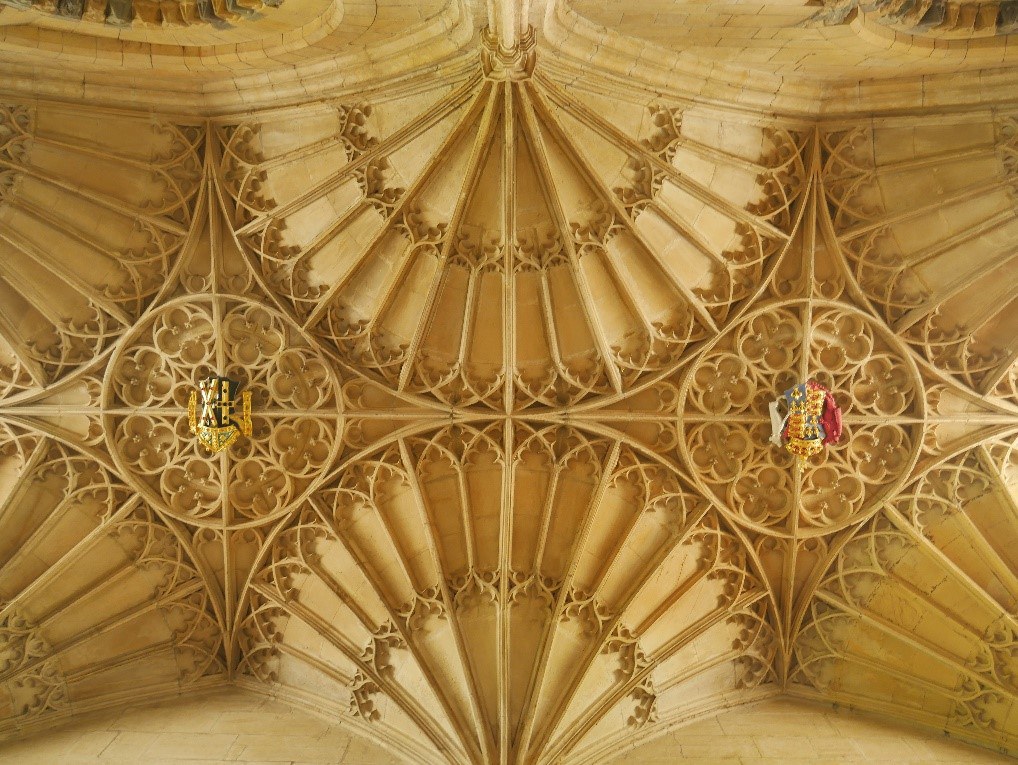St David's Cathedral
Chapter 2 : The Cathedral
The works began around 1180, and construction was largely from the sandstone mined at nearby Caerbwdi. The style is Transitional Romanesque – old-fashioned by this time, as Gothic architecture was spreading from France to create the Early English style used in cathedrals of similar date across the border. One hundred and fifty years later, Bishop Henry de Gower (bishop 1328 – 1347) raised the side walls to create more windows. During his time, flying buttresses were added to counteract the outward thrust on the walls of the nave – which are still visibly inclining outward. Gower also constructed the elaborate stone screen behind which his tomb is housed. Traces of original mediaeval wall-paintings have been revealed in the screen, whitewashed over after the Reformation. The bishop’s throne, a superb twenty-nine-foot-high example of mediaeval craftsmanship in wood, also dates from Bishop Henry’s time, complemented by the sixteenth century timber stalls for dean and chapter.

In a prime position in the cathedral, near the shrine of the saint himself, is the tomb of Edmund Tudor, Earl of Richmond, son of the Dowager-Queen of England, Katherine of Valois, and her second husband, Owain Tudor. Edmund was much favoured by his half-brother, Henry VI, and granted not just the earldom, but a wealthy bride, the Lady Margaret Beaufort, daughter of the Duke of Somerset.
Edmund did not live long enough to truly enjoy his good fortune. He died in 1456, in his twenties, in Carmarthen, possibly of plague, weakened by imprisonment following one of the early skirmishes that developed into the Wars of the Roses. Originally, he was entombed at Carmarthen, in the Greyfriars, but was moved to St David’s following the dissolution of the monasteries, instigated by his grandson, Henry VIII. The original brass, describing Edmund as ‘brother and father of kings’, was destroyed during the Commonwealth.
The cathedral is unusual in that the ceilings are oak, rather than stone. The current structures date from the late fifteenth and early sixteenth century, when they were installed at a cost of around £400, and the materials probably came from Ireland, the nearest source of extensive quantities of oak.
Also dating from the Tudor period, is the fine ambulatory at the east end, created by Bishop Edward Vaughan (bishop 1509 – 1522). The ceiling is fan-vaulted in Perpendicular style, with the coat of arms of Henry VII in the centre. A plain stone slab marks the bishop’s burial spot. Bishop Edward commissioned a renewal of the Black Book of St David’s – a Valor of the bishopric’s property, originally commissioned in 1326, by Bishop David Martin and completed the year after his death.

During Henry VIII’s reign, St David’s received its first proto-Protestant bishop, William Barlow, bishop from 1536 – 1547. He failed in his quest to move the seat of the diocese to Carmarthen, and also struggled to wean his diocese from the old faith. It was not until the reign of Bishop Richard Davies (1561 – 1581) that the Reformation was established in Wales, after he had persuaded Elizabeth I and Parliament that it could only take hold if the Bible and Prayer Book were translated into Welsh.
By the end of the eighteenth century the West front of the cathedral was leaning so dangerously, it had to be rebuilt – the works were done by Sir John Nash, and shortly after, Sir George Gilbert Scott, the great Victorian church renovator, got his hands on the place, and introduced many of the apparently Gothic elements, including the painted ceiling over the transept.
Renovations, repairs and new structures have been added throughout the cathedral’s long life, such as the creation of new icons for the shrine of St David, by local artist, Sara Crisp, and installed on St David’s Day, 2012 and it continues to serve as the cultural and religious centre of the Anglican Church in Wales.
